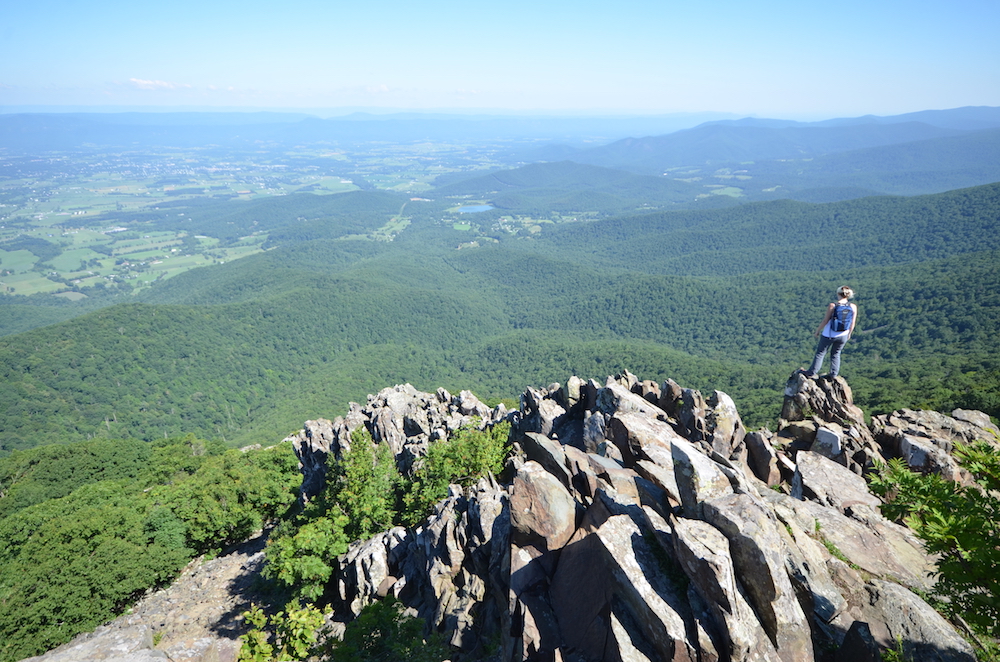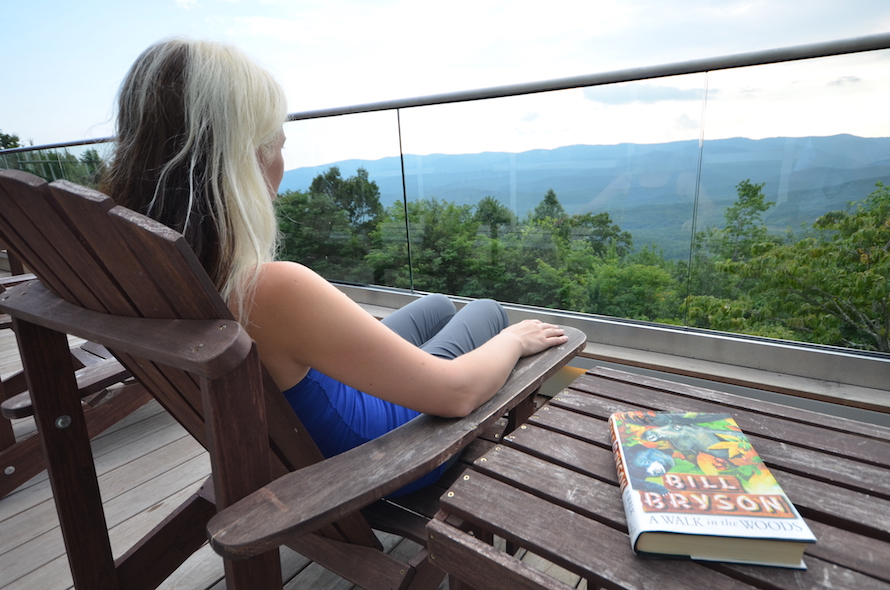
Visit USA UK Media Awards 2018
Broadcast Media Award
This year’s Broadcast Media award rewarded journalist Phoebe Smith for her engaging commentary about the Appalachian Trail.
Her story took her perceptions of Georgia to Maine into the mainstream via the highly regarded series ‘From Our Own Correspondent’ which is hosted on Radio 4 by Kate Adie - who herself received the BAFTA Fellowship earlier this year.
Read the script of Phoebe’s award-winning piece below or
listen to the original programme here, starting at 21mins 30 seconds.
You can also find out more about journalist and broadcaster Phoebe’s adventures
on her website, and
on her YouTube channel - or
buy her books on Amazon here.
Appalachian Trail for BBC Radio 4’s From our own Correspondent
By Phoebe Smith
The sign on the bathroom wall declared: ‘In about 40 miles north, the Appalatchin Trail becomes the Appalayshun Trail’. It was hung inside a wooden hut, in a small American town called Harpers Ferry. Here, in the state of Virginia, it was meant as an amusing demonstration of the difference between the southern and northern states that most hikers were making their way through on the 2,100mile walking trail. A journey made famous by the travel writer Bill Bryson in his 1998 book ‘A Walk in the Woods’.
Now, however, since the Presidential election and the fractious relationship that the southern, largely Trump-supporting, and northern, Clinton-backing, states have with each other, it has taken on an altogether deeper meaning.

Most hikers begin their walk at the southern terminus of Springer Mountain, in Georgia, a Republican stronghold. From its summit hikers have to walk nearly 700miles before they reached a single county that did not back the controversial 45th president. It was on that mountain that I met Murray Lamb who walked the trail in 2004 after 6 years of active service in the US Navy.
As we strolled we talked a lot. About the native black bears – he never saw any – the popularity of the trail since the Bryson book and the more recent film – there are more hikers than ever before. Then I decided to bring up a trickier subject.
“Oh no one talks politics on the trail,” he said, “It’s the place where you can really escape all of that.”
When I asked how, he introduced the concept of ‘The Bubble’. “Hikers become all consumed with the trail,” he explained. “Your days are just about miles, campsites, the weight of your backpack, where you’ll sleep. It goes above anything and everything else.”
I found the concept of ‘The Bubble’ fascinating. Could a walking route really exist insulated from the outside world, from the troubles, the controversy, the differences?
Further along in the small town of Hot Springs, North Carolina – a place that proudly celebrates Confederate History Month – I arrived to meet the owner of a hiker hostel called Sunnybank.
“Carter!” shouted Elmer Hall as his friendly dog bounded towards me. Named, he said, after ‘the best president we’ve ever had’ Elmer was a liberal, grow-your-own, home-cooking vegetarian who spoke of the mind opening power of the trail.

“People always have a reason for doing it – whether leaving school, getting divorced, retiring,” he told me, while rocking in a creaking wooden chair on his wraparound porch. “On the Appalachian Trail all the differences of age, gender, beliefs cease to matter. People unite in ‘The Bubble’ in which they walk.”
By the time I passed through Virginia and its humours on the bathroom wall, and reached the state of New Jersey, I realised that I had also entered my own bubble. At a campsite I spoke to visitors for whom the Trail – no matter how I pronounced it – meant nothing. I felt myself become instantly uncomfortable.
“It’s really common,” Trail Volunteer Sona Mason comforted me, a little further north in New York State.
“I heard of one hiker in 2001 who arrived a week after 9/11,” Sona recalled. “When he found out about the terrorist attacks he simply couldn't understand. When you’re in a zone solely occupied by the trail, anything else outside it doesn’t really exist.”
I nodded as we headed up to the top of Bear mountain, where the trail snakes off into a seemingly endless canopy of trees; a physical manifestation of exclusion and remoteness.
But rather than complete isolation, the trail did offer hope for the way things can be when people who share a passion work together. I saw witness to this in Vermont where a so-called Trail Angel had left beers and cakes for other walkers and, further on in New Hampshire, volunteers were busy repairing the path.
By the time I reached Monson, Maine, and the last stop where walkers can buy supplies before entering the so-called 100-mile Wilderness and beyond it the summit of Mt Katahdin where the path ends, I was convinced that the trail and its bubble was a microcosm for good.
Volunteers, rangers, hikers and all those connected with this thin sliver of a path create a single community who strive to make things better for each other. I thought back to something Sona had said. “It’s more than a trail. It links people between the states of Georgia and Maine and transcends manmade borders and boundaries.” She was right. It had united people – whether they voted Trump or Clinton, whether they say Appalatchin or Appalayshun. Perhaps a walking trail can be the pathway to healing broken relationships, one step at a time.